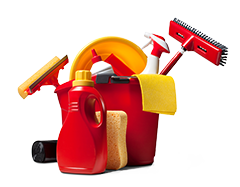
This past weekend, my wife and I were helping friends of ours move out of their Minneapolis apartment. As we arrived, we were greeted with boxes and furniture all covered with a thick coat of cat hair. Huge dust-bunnies roamed free and without fear. The place had obviously never been cleaned! After a few hours hauling and cleaning, we finished our duties and headed home.
Thinking back on the experience, I couldn’t help but think about keeping constant cleanliness, or even just manageable clutter. I will be the first to admit that I’m not the most fastidious neat-freak, but I keep organized and try to sift through items I no longer need.
From a content and digital marketing perspective, I believe that this practice of hygiene can also be helpful for companies and brands. Just by reviewing content and website layouts, you can help create great user experiences with the following:
- Eliminating irrelevant or duplicate content
- Uncovering past content that people still need
- Easily navigable, user centered design
These are not, by any means, the only pieces you need to drive engagement, but content cleaning will help interested users enjoy their time and most likely return.
Throw Away Irrelevant/Duplicate Content
Utilize your Google Analytics or website analytics tools to assess your pages, sorting out poor quality content and duplicate content from your high-value, original content. This not only helps your customers by eliminating or upgrading content, but also resolves issues that may be affecting your Google rankings. MOZ’s Rand Fishkin looks at this in a recent White Board Friday: Clean Your Site’s Cruft Before It Causes Rankings Problems.
This doesn’t just apply to old content, though. You should still be reviewing all new posts to make sure that you are creating top-notch content for your users.

Uncover Reusable Content
When you look through your content and find that some of the older posts and pages are still driving lots of traffic, you’ve found hidden treasure! Since these posts are still being read frequently, it’s well worth your time to update them and make them more visible through reposting (if you want). Users will now find this content more relevant.
Clean Up Your User Experience
This doesn’t have to mean redesign your website, just make sure that users can easily find and interact with the content they are looking for. For starters, understand which devices your customers use (mobile or desktop). Understanding this can help you in your site’s layout. Mobile users prefer larger interactive targets as well as larger text.
Your site structure should also be intuitive, meaning people will find the content they are looking for where they would expect to find it. For example, blog posts should be found in the blog. It seems obvious- I bet most of you are asking, “How many concussions has this guy had?” But not everything is as clear-cut. Just remember to make the user’s path of information simple to follow.
Site functionality is also crucial. Be sure you’re leading people from old pages to updated pages (using 301 redirects). You can also delete a page that has no value, using a 404 page. Overall, make sure that the pages visitors find are up to date and viewable.
All of these hygiene practices can help support your SEO efforts, as Google’s main goal is to make users happy. By keeping clean, organized content, your company’s website can provide good user experience, which will help build your brand’s equity with visitors.
The key takeaways here are to review old content, keep an organized site structure, and create quality, unique content.
Keep clean!
